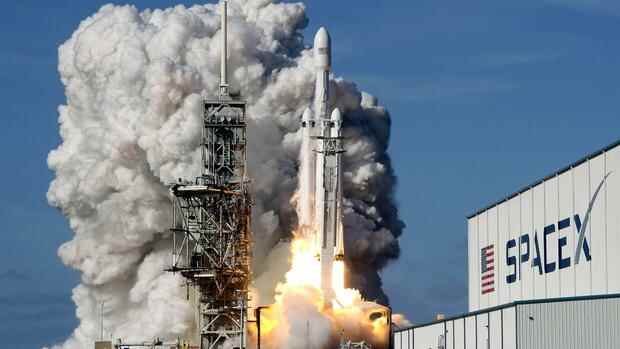The privately developed rocket takes loads like people into space.
(Photo: dpa)
new York A solar storm has crashed dozens of new satellites from space company SpaceX. Up to 40 of 49 small satellites that were launched just last week have been lost, Tesla boss Elon Musk said.
SpaceX described the loss of the satellites as a “unique situation”. Geomagnetic storms are caused by intense solar activity, such as solar flares, which eject streams of plasma from the sun’s corona into space and toward Earth.
One such storm on Friday warmed and thickened the atmosphere, increasing Earth’s gravitational pull on the satellites by up to 50 percent, Space X said.
The ground crew was still trying to save the compact satellites: they were put into a kind of “sleep mode” in which the flat satellites were exposed to particularly low tractive forces. But the atmospheric forces were too strong, the statement said. The satellites could not ascend to higher, more stable orbits.
Top jobs of the day
Find the best jobs now and
be notified by email.
Due to the storm, the satellites, which weigh only 260 kilograms, burned up when they re-entered the earth’s atmosphere – or are about to end like this, according to SpaceX. The satellites were hit by the solar storm while they were in a transitional position. SpaceX sends them into this unusually low orbit so that duds re-enter the atmosphere and do not pose a threat to space travel.
Criticism from Nasa and Amazon
The SpaceX program called Starlink is causing increasing resentment at the US space agency Nasa. As it became known on Wednesday evening, Nasa has concerns about SpaceX’s plan to launch tens of thousands more satellites into orbit to provide Internet access to remote corners of the earth.
“NASA is concerned about the potential increase in collisions and possible impact on scientific and manned space missions,” the FCC said. SpaceX has applied for the launch of an additional 30,000 satellites under the Starlink program. The expansion “would more than double the number of monitored objects in Earth orbit and more than fivefold the number of objects below the 600-kilometer limit,” NASA warns.
The online retailer Amazon, which is planning its own satellite network with its Kuiper program, has also complained to the FCC.
The Starlink satellites have long been criticized by astronomers, partly because of their shiny surface. Jonathan McDowell, an astrophysicist at the Harvard Smithsonian Institute, said: “We are concerned about the large number of satellites. These interfere with astronomical observations. I think we need more experience with a few thousand satellites in orbit before we can launch tens of thousands more.”
SpaceX initially did not respond to the criticism when asked. However, the company said its own employees would work closely with the US Space Force.
There is no danger from the 40 falling satellites: There is “no risk of collision with other satellites”, there is “no debris in orbit”, and satellite parts do not reach the ground. Great efforts are being made to avoid debris in orbit.
Almost 2000 Starlink satellites are already orbiting the earth. The current permits provide for an upper limit of around 12,000 satellites. The SpaceX internet service can currently be received in 25 countries. With Starlink, the company aims to generate sales of around $30 billion by 2025 – six times more than with its own rocket launch program.
With material from Reuters.
More: Part of SpaceX rocket could crash into the moon in March
